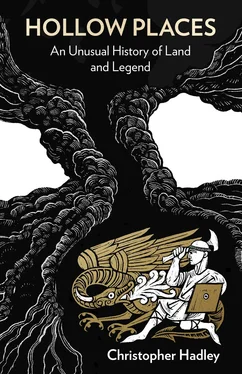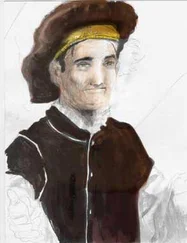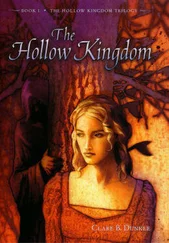The idea of digging up something out of the ordinary would not have been alien to the men who knew that from time to time dull lumps of metal were pulled from the soil and could be turned into shillings and even pounds: a fabulous golden torquewas found nearby a few years before, and some time in the 1830s labourers land-ditching unearthed a skeleton and a Bronze-Age founder’s hoard. It is tempting to surmise that the woodcutters’ attitudes to holes in the ground were conditioned by the fact that such treasure had been discovered in neighbouring fields. Treasure might even suggest the presence of guardian dragons, although the great folklorist and British dragon expert Jacqueline Simpsonhas pointed out that legends of dragons who guard treasure and those involving a dragon-slayer are not found together in England.
There was nothing in the hole, but in the same way that the Romans who found the fossils in Jappa assumed they had stumbled upon the remains of Perseus, those labourers’ thoughts turned to Shonks because he was their text. There are two explanations for the part fossils played in the formation of monster stories in antiquity: either they started the stories, or the stories of monsters and heroes existed before the fossils were found, but those finds were explained in terms of the stories, and then in time the stories were modified by the finds. Perhaps the monsters took on the guise of the fossils: mammoths begat cyclops, Protoceratops – griffins, and Giraffokeryx launched a thousand dragons.
We know the story of Shonks and the dragon existed before the hole was found. There were no fossils, but superstition, the ancient yew, the dark winter’s morning in a remote spot, and that great rent in the ground – together they were enough to suggest an extraordinary explanation.
It causes us moderns problems when the world of make-believe meets the everyday. We sometimes find it hard to imagine that people really thought these things: that dragons nested in a field. Weren’t they just messing around? Ted Barclay stands in the vestry of Brent Pelham Church holding the remains of an old weather vane and declaring that it is one of Shonks’ arrows. He is having a bit of fun. He does not really believe what he is saying – at least I hope not – but I am convinced those men did believe what they were saying. They believed it, because Shonks was the villagers’ key text, the key to their cosmology. The historian Ruth Richardsonhas cautioned that to make sense of the past, ‘we must come to terms with our own hostility to superstition’. It had been barely a century since an old woman in Brent Pelham was arrested on suspicion of witchcraft.
The writer Charles Nichollhas argued that Antonio Pigafetta, who chronicled Magellan’s voyages, saw giants in Argentina because he expected to see giants. Why? Because he had read outlandish travellers’ tales about them. In the same way Master Lawrence and the others would have expected to see a dragon’s lair because they had grown up with the story of Shonks’ and seen the dragon carved on his tomb.
We can hardly blame uneducated labourers for seizing upon the stories they knew best when scholars made similar mistakes, defaulting to Homer and the Bible to explain the world. When elephant bones were found with a flint hand-axe by the River Thames, some pointed to the Bible and said it dated from the Flood, whereas classicists thought the Romans brought the elephant to London in the first century CE and it had died in a battle with an axe-wielding Briton. (In fact, the axe is from a period when elephants roamed the Gray’s Inn Road, some 350,000 years ago.) Ask a nineteenth-century labourer from the Pelhams who slew a dragon and they would answer Shonks and not St Michael or St George.
An incident in 1833 attests to how closely the Pelhams were associated with the Shonks legend. The Country Press for Saturday 20 April 1833 contained a case of local excitement from the Petty Sessions at Bishop’s Stortford: ‘for it seemed as if the whole Pelham population had come to town. This arose from a “set-too” amongst the fair amazons of that village, whose pugnacious propensities have been handed down ever since the memorable year of 1086, when Hun, who first tempted, was vanquished by O’ Piers Shonks.’
Unfortunately no other record of this tantalising case has survived, but while it might be too large a claim to say that the Shonks legend was ubiquitous in that place, in those times, he was probably never that far from Pelham minds.
Or had something put them in mind of Shonks that morning?
Was something else going on that made those men eager to find evidence for the legend? Had someone questioned it and mocked the stories? In the 1840s, John Walker Ordinterviewed a Mr Marr about the legend of Scaw the serpent-killer in Handale, North Yorkshire. Later Ord would write, ‘Of course we could not gainsay these facts, especially as they were recited with a determination that rendered argument dangerous.’ Challenging a legend had always been risky. In Bodmin in 1113 when a visiting French canon was foolish enough to scoff at the notion that King Arthurstill lived he caused a riot. In Brittany at that time, it was said to be unsafe to assert in a public place that Arthur was dead: ‘Hardly will you escape unscathed without being whelmed by the curses or crushed by the stones of your hearers,’ reported Alain de Lille in the twelfth-century Prophetia Anglicana . If it wasn’t dangerous to scoff, it was certainly foolish, and still is – who is to say that the ‘set-too’ among the Amazons of the Pelhams was not because someone was foolish enough to suggest that Shonks did not slay a dragon.
In The Handbook of Folk-Lore, Charlotte Burne cautions the folklore collector to conceal incredulity and amusement and to suppress their smiles when encountering local beliefs and customs. Was the Reverend Soames a little too mirthful about Shonks, and vocal about it too? On the other hand, he may have been sour-faced and prayed the yew down. As the author of the History of the Reformation of the Church of England he would have known that the palming ceremony on Palm Sunday was banned in 1569, yet it continued for centuries on hilltops and in remote corners. The yew was a popular substitute for palm leaves. When Soames preached against Catholic-leaning innovations, did he also try to dispossess his flock of their superstitions, counselling that the yew tree should come down and pouring cold water on local legends about dragons?
The discovery of the dragon hole meant the villages had something to throw back at their parson with all his book learnin’. How could anyone deny the truth of the stories now they had found the dragon’s lair? What do you say to that, Reverend? If the discovery of the hole was a thumbing of the nose at authority, it may help us to understand the long-ago origins of the rest of the legends about Shonks. There are those who think that folk tales and legends were the folks’ response to their struggles against the feudal classes, their struggles for a better life.
In the 1830s, the folks’ traditions were under threat from even greater forces than the local vicar. Old ways of thinking about the world were changing. Charles Lyell’s Principles of Geology was published in three volumes between 1830 and 1833, while a disciple of Lyell was gathering evidence on a voyage that would completely change the way we look at the world. Charles Darwin was scrambling through the impenetrable forests of Chiloé Island in the winter of 1834, catching foxes by striking them on the head with a rock hammer, and meeting native Christian converts who still ‘pretended to old communication with the devil in certain caves’and so risked the fate of forebears who had answered to the Inquisition. In the eyes of men of science, the villagers in the Pelhams might have seemed equally suitable subjects for anthropological observation. Such rationalists would have soon explained away the hole in the chalk and derided the existence of dragons.
Читать дальше












